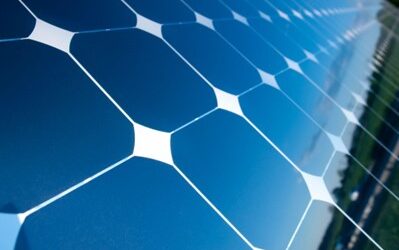Energy
Energy is the Heart of the Solution to the Climate Crisis
The thousands of ways fossil fuels are burned to create the energy that powers our industrial society may seem too big and distant for us to affect as individuals. But as household decision-makers, consumers, and as (mostly) members of democracies, we have more power than we imagine to reduce the carbon emissions from the energy humans use.
Climate Steps: Energy

Conduct a home energy audit
 Wash clothes on cold cycle
Wash clothes on cold cycle
 Changes lightbulbs to LED
Changes lightbulbs to LED
“The carbon emissions from energy are primarily the responsibility of the citizens of a few countries. The largest energy consumers per capita include Iceland, Norway, Canada, the United States, and wealthy nations in the Middle East such as Oman, Saudi Arabia and Qatar. The average person in these countries consumes as much as 100 times more energy than the average person in some of the poorest countries.”
LEARN MORE
About Climate Change and Energy
The graph below breaks down energy use in the United States. 14.1 quadrillion BTUs (quads; a measure of energy use), or about 22% of the total, are used to power passenger vehicles, and 11.7 quads (18.5% of the total) is residential energy use, including heating food, water, and homes, and running air conditioners, refrigerators, washers, electronics, and lights. While individuals may feel powerless to affect the carbon emissions from our national energy use, we collectively have decision-making power over 40% of the total.

(Source: NY Times “How Electrifying Everything Became a Key Climate Solution” By Nadja Popovich and Brad Plumer April 14, 2023 ) The second graph (from the same source) shows how much U.S. energy comes from directly burning fossil fuels and how much comes from electricity.

Electricity from the grid currently powers the darker-colored areas, of which 21.5% is generated by renewables – solar, wind, and hydro – in the US (as of 2022, U.S. Energy Information Administration…). The lighter areas are now powered by directly burning fossil fuels. Clearly, we have a lot of work to do in all four sectors to wean ourselves off fossil fuels!

Focusing in on the residential space, to reach our climate goal of burning zero fossil fuels, we need to
- Reduce energy use by upgrading the efficiency of lighting, air conditioning, appliances, and insulation in our homes.
- “Electrify everything,” meaning switch the energy source from burning fuel to electricity. Since air conditioning, refrigeration, lighting, and electronics are already electrical, the appliances that need to be electrified are primarily space heating, water heating, and cooking stoves.
- Convert the electric grid to 100% renewable, zero-carbon energy sources.
Efficiency:
As the energy flow chart above indicates, more than half the energy used in our homes is wasted (or “rejected”)(Lawrence Livermore National laboratory…). There is much that can be done to increase efficiency, starting inside your home.

Photo by Greg Rosenke on Unsplash
First, ensure your home is adequately insulated and sealed to keep the conditioned (heated or cooled) air inside. If you own your house, check with your county government or electric utility to see if they offer a service to evaluate your house’s insulation and can refer qualified contractors for upgrades. Search “insulating,” for instance, on ThisOldHouse.com: https://www.thisoldhouse.com/search?q=insulat. In addition to increasing insulation in your attic and walls, replace the weather-stripping around exterior doors and repair or replace leaky windows to eliminate drafts.
Next, you’ll need to make some lifestyle choices for electric heating and air conditioning to be efficient. Make sure you close your window shades or curtains to insulate windows at night, and set your thermostat as low as possible in the winter and as high as possible in the summer. A programmable thermostat allows you to choose moderate temperatures while away or sleeping. Keep your body comfortable by adjusting clothing to match the season and drinking cool or warm drinks.

Photo Courtesy of Cat Russell. Editor’s note – cellular shades are extremely efficient.
Most of the heat lost or gained in our houses is through the windows, so take advantage of the passive heating from sunlight by opening the shades or curtains in south-facing windows during sunny winter days. Use awnings and reflective window coverings or plant trees to shade west-facing windows from the hot afternoon summer sun (Energy.gov…). See also our Buildings section for more ideas.
Once your house is airtight, you will save a lot of energy. On the other hand, indoor air quality becomes an issue, and it will be even more important to stop using fuel-burning appliances indoors (more on that below, under electrification) and to install a heat-recovery ventilator. Heat recovery ventilators (HRVs) and their cousins energy recovery ventilators (ERVs) replace polluted indoor air with fresh outdoor air while minimizing the air’s temperature change. Different types are appropriate for houses with central air ducting and those without (Green Building Advisor…).
Efficient lighting: replace all your incandescent light bulbs with LEDs. Simply swapping 20% efficient incandescent light bulbs for 99% efficient LEDs saves nearly 80% of the energy used to light your home without reducing the amount of light produced! The LED bulbs are more expensive but pay for themselves in lower energy costs over time (Energy.gov…).

Szabolcs Toth, via Pexels.com
Other ways to save energy include washing your clothes in cold water and taking shorter showers. Hanging your clothes to dry is also a great way to save energy.
Electrification:
Space heating, water heating, and cooking are the primary areas where many houses burn fossil gas (predominantly methane, a potent greenhouse gas and source of indoor air pollution (CBC News, Canada) and good electric options are available.
Electrifying heating:
Heating homes in many parts of the US is currently accomplished by burning fuels – heating oil, natural gas, or even wood, depending on the location. As the graph at the top of the page shows, switching the source of energy for heating to electricity is the most significant opportunity we have to reduce carbon emissions in our homes.
Electric heat pumps are a type of heating unit that has become both less expensive and more efficient, and government subsidies in the U.S. ensure they are cost-competitive with conventional fuel-burning heating systems. Since heat pumps, as the name implies, move heat from one space to another, you can set your heat pump to either cool your house or heat it as needed – in fact, a great way to electrify your heat is to replace your air conditioner with a two-way heat pump (National Resources Defense Council… -includes image credit).

National Resources Defense Council
Heat pumps are more efficient than fossil gas furnaces or electrical resistance heaters because they just move heat from one place to another rather than converting chemical or electrical energy to heat energy(TechnologyReview.com…). A heat pump can have an efficiency greater than 100% (and in fact, many have efficiencies of 300 or 400%, which means that, when heating your house, one unit of electric energy moves 3-4 units of heat into your home!)
The source of the heat pumped into your home varies — air-source heat pumps (including central heat pumps and so-called “mini-splits”) move heat from the outdoor air (HeatPumpSavvy.com…), while ground-source heat pumps (often referred to as “geothermal” heat pumps) move heat from the earth (ThisOldHouse.com…). The heat can be delivered directly to the indoor air or to water pumped through radiators or radiant floor heat (ArcticHeatPumps.com…). For cooling, the heat pump reverses direction and pumps the heat out of the house back to the outdoor air or the earth. The type of heat pump that makes sense for your home depends on such factors as whether you have forced-air heating or radiators, the minimum temperature and altitude of your location, and whether you also need cooling in the summer (NYTimes Heat Pump Buying Guide). Be sure to get bids from several experienced contractors before deciding. Check for government subsidies — in the U.S., the combination of local and federal tax credits may offset around half the cost of the new equipment!
Water heating:
Replace your methane or propane water heater with an efficient electric heat-pump water heater. (Thisoldhouse.com…)
Dryers:
There are now heat-pump clothes dryers, which are more efficient than resistive electric dryers, and do not emit the pollution of fossil gas dryers. (Energystar.gov/products/heat_pump_dryer.)
Cooking:

Photo by cottonbro studio, via Pexels.com
Turn the fossil gas valve off at the wall and cook with an electric or induction stoves or small cooking appliances such as an induction hot plate, electric skillet, instant pot, crock pot, or countertop convection oven (Vox.com.) Induction stoves are very efficient and precise, though they are more expensive than resistive electric stoves. Convection ovens are at least 20% more efficient than ovens without a fan and heat very evenly (Cnet.com, what is a convenction oven.) You can collect rebates from the US government for electric cooking appliances, even if you rent.
Greening the grid:
Contrary to skeptics’ talking points, it is entirely possible to power the electrical grid reliably without using fossil fuels (e360.Yale.edu). Utilities in most places in the U.S. can increase the percentage of renewable generation on the electric grid to around 80% with wind and solar generation plants and utility-scale energy storage. To become fully renewable, however, the last ~ 20% will need to come from solar panels installed on single-family homes and multi-family buildings. (private communication – City of Denver sustainability office.) Homeowners can use solar-charged home or electric-vehicle (EV) batteries to keep the lights and heat on when the grid goes down instead of burning fuel to run noisy, smelly gasoline generators. Further, the utility can access the stored energy to stabilize the grid during peak demand (Energy.gov).
Residential renewable, zero-carbon electric power sources:

Photo Courtesy of Cat Russell
Good news! We can meet the 20%. Thanks to ever-decreasing equipment costs and government tax credits, solar is now cost-effective relative to grid power for most U.S. customers from day one – truly – and the savings are significant over the lifetime of the system (Energy Sage). Battery technology has also improved to the point where it makes sense for most homeowners to attach an energy storage system to their solar electric project, both to keep the heat and lights on when the grid goes down and to take advantage of utility pricing designed to incentivize distributed energy storage on the grid. With no mechanical parts to break, manufacturing improvements in the solar modules, and new battery technology requiring zero maintenance, residential solar photovoltaic (PV) systems are highly reliable, generally operate for decades at nearly the same efficiency as when installed, and can be used to power new loads with 100% renewable power (U.S. National Renewable Energy Laboratory…).
Even if buying solar outright or with a loan isn’t economically viable for you, many city-dwellers and even some rural residents can lease a solar PV system through a solar-leasing company. The solar panels belong to the company, but you get to offset your electric bill with solar generation, AND you are helping provide solar energy to your community. You may even get ownership of those solar panels after 15 years. But please do your research, as you generally won’t save as much money in the long run with a leased system as if you purchase the system upfront (reference.)
Note again that adding solar is the last step in greening your energy usage rather than the first. Many utilities limit the energy their customers can generate to their historical usage, so ideally, you first want to add any new electric equipment (such as a heat pump, electric stove, and EV) first and then size your solar electric system to offset 100% of the energy you require for your fully electric home.

Photo by Pixabay via Pexels.com
Finally, if you don’t own your home, you can participate in your electric utility’s renewable power plan, available in most cities and usually linked to utility-scale wind or solar installations. Signing up for their program will encourage your utility to accelerate its transition to 100% renewable electric power generation.
Summary of energy climate steps for homeowners:
- Upgrade your home’s insulation and seal your house for heating and cooling efficiency.
- Maximize passive heating and cooling techniques such as insulative window shades and strategically placed trees.
- Use less hot water by washing your clothes in cold water and taking shorter showers. Hang your clothes to dry rather than using a dryer.
- Replace incandescent and fluorescent light bulbs with efficient LEDs.
- Improve indoor air quality by converting any gas stoves, dryers, and water heaters to efficient electric models and installing a heat-recovery ventilation system.
- Electrify your heat by switching to an efficient heat pump suitable for your climate and altitude. If you live in a climate that requires mechanical cooling, use a two-way heat pump to heat and cool your house.
- Convert your transportation method to a climate-friendly option in your locale: an EV, e-bike, telecommuting, and/or public transportation. (See our Transportation page.)
- Install solar on the roof and attach a battery to help with load shifting on the grid so the utility can get closer to 100% renewable generation.
Equivalent climate steps for renters:
- Use window shades or curtains to insulate windows at night and moderate your thermostat’s setting by adjusting your clothing and bed coverings to match the season. Take advantage of the passive heating from sunlight by opening the shades or curtains in south-facing windows during sunny winter days.
- Ask your landlord for permission or help and install simple efficiency improvements, such as new weather-stripping around the doors, to eliminate drafts. And some landlords will be very happy to take you up on your offer to insulate the attic, especially if you’re willing to install the insulation yourself.
- Use less hot water by washing your clothes in cold water and taking shorter showers. Hang your clothes to dry rather than using a dryer.
- Replace incandescent and fluorescent light bulbs with efficient LEDs.
- Even if your home has a gas stove, you can cook efficiently and safely with electric appliances such as a induction hot plate, electric skillet, instant pot, crock pot, and/or countertop convection oven.
- Even if your rental unit has heating equipment installed that relies on burning methane, propane, or heating oil, you may be able to turn the fuel-burning system down or off and use portable electric radiators for supplementary space heating. Also, consider a window-mounted air-air heat pump unit.
- Convert your transportation method to a climate-friendly option in your locale: an EV, e-bike, telecommuting, and/or public transportation. (See our Transportation page.)
- Finally, participate in a utility green energy program to help speed the adoption of utility-scale solar and wind projects.

Photo by Nice Guys, via Pexels.com
Green Neighbor Challenge
Below is Green Neighbor Challenge's energy finding tool. Type in your zip, and Green Neighbor will provide you with green energy options for powering your home.
Rewiring America
Below you can find information regarding savings and incentives when you electrify your home. This information comes from the leading electrification nonprofit "Rewiring America".
Energy Articles
Let it Shine: Creative Ways to Use Solar Energy for Your Property
Image source: Deposit photos Guest author: Annie Button, UK Earth Hour 2024, on the 23rd March at 8:30 pm, is an important moment to set aside to reflect on our collective use of energy and how it impacts our environment. With its symbolic ‘lights off’ message, it...
How to Create an Impactful Ripple Effect through Effective Communication
As the world continues to warm, we must take whatever steps we can to slow down and then stop that process. And although we as individuals can definitely take worthwhile steps, we can achieve greater success if more of us participate. Luckily, we can influence other...
Our Games Resource Page has been updated and expanded!
Good news, Climate Steppers! We have updated and greatly expanded our Games Resource Page with more climate action and environmental games, with some help from Wikipedia (more below). The games we’ve chosen educate players about the science of climate change, the...
It’s Not Too Late to Turn the Tide on Climate
That is, if everyone, everywhere, acts all at once on Climate. Here's what you can do. Have you been wondering – or maybe worrying – if it’s possible to reduce greenhouse gas (GHG) emissions by half by 2030 and to get to net-zero by 2050? While the climate...
Our Social/Community-level Actions are Here!
NEWS! - Mark Stewart has just wound up a series of pages about the impact of individuals leading and joining COMMUNITIES in terms of fighting the climate crisis - and adapting to climate disasters. So check out our new Social/Community Section!...
Protect the Night
People light up the night almost without thinking, as we have for millennia. At the minimal level, we do this instinctively for our survival and protection. But the practice has grown to destructive extremes in modern societies. With a lack of understanding and...





